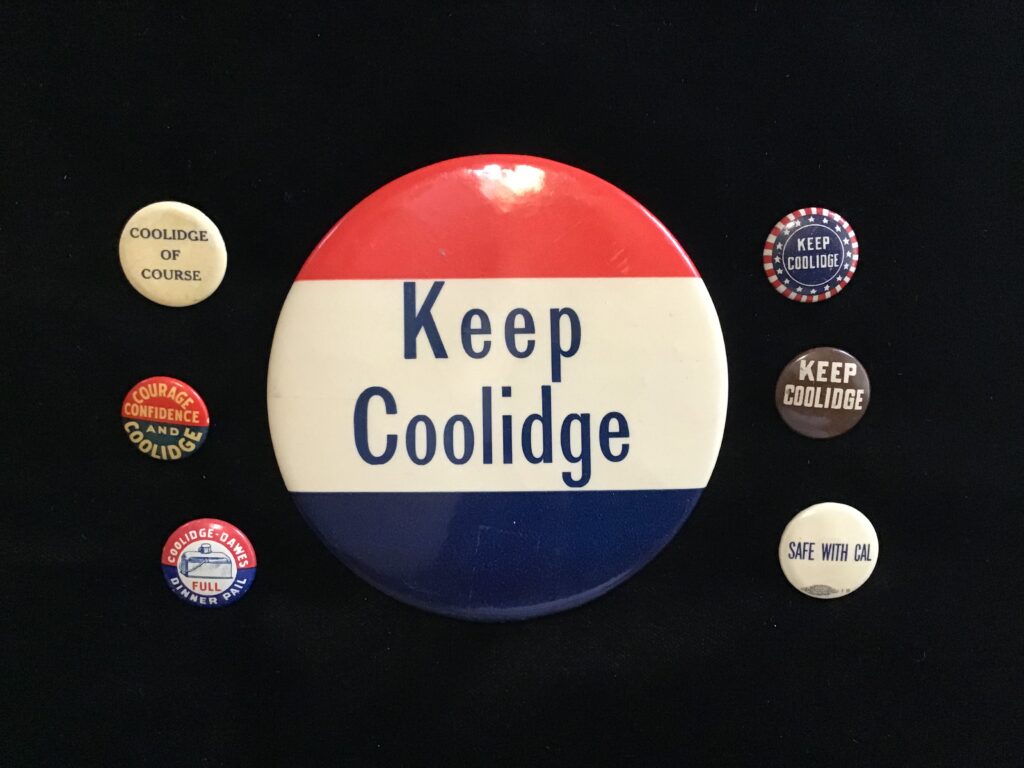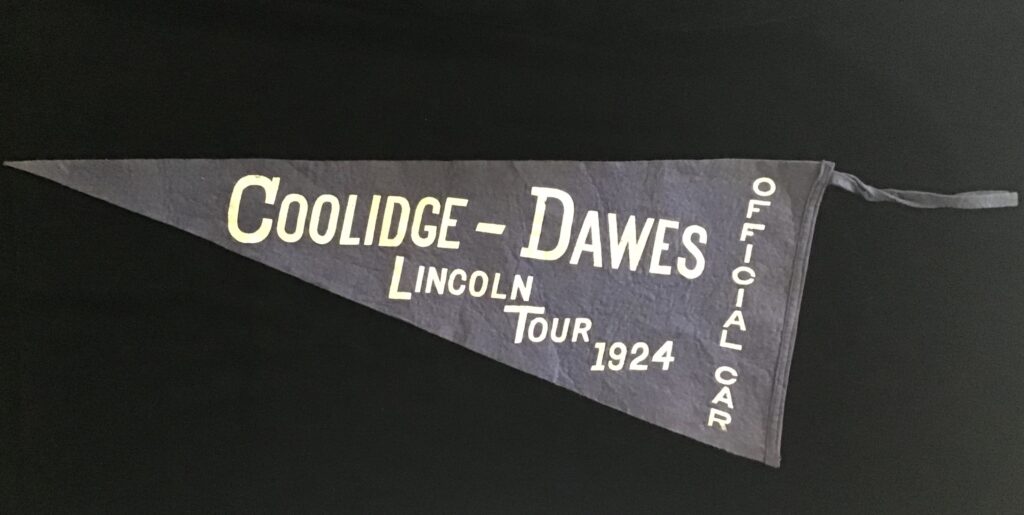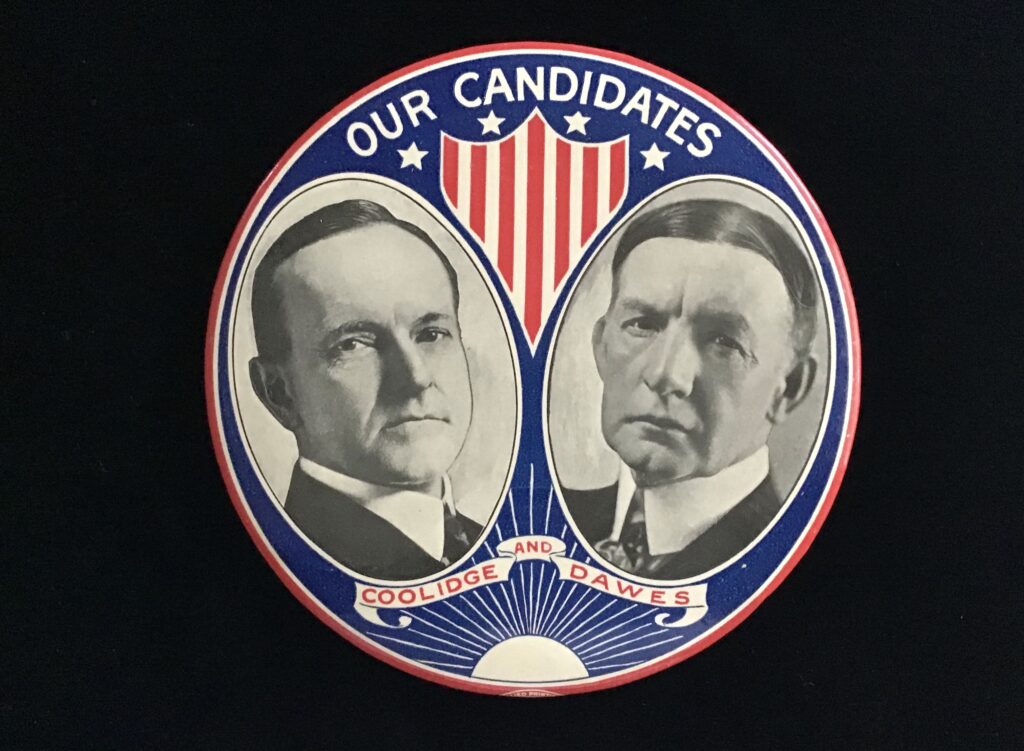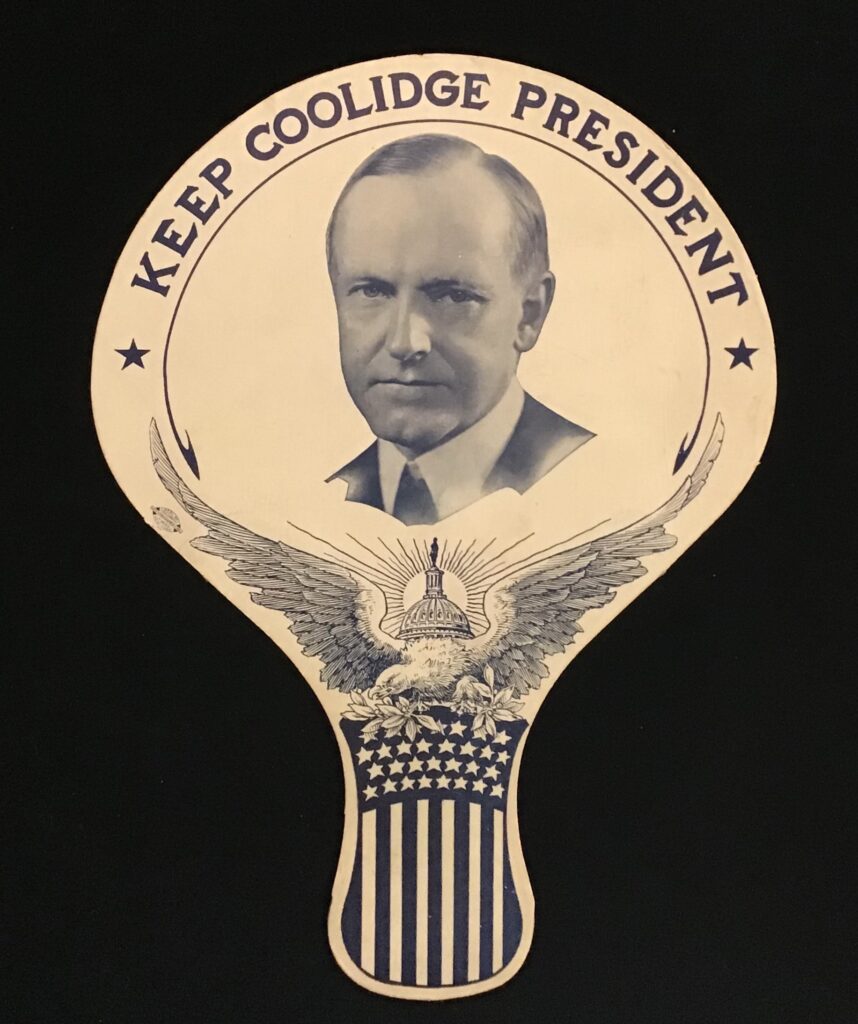Calvin Coolidge was once asked if he had any hobby. He replied, “Holding office.” Over the years, Coolidge would run for public office 17 times (excluding primaries), beginning his political career as Northampton City Councilman and ending it as President of the United States of America. Coolidge probably put himself before the people’s judgment more than any of our other presidents. Though much has changed in the 100 years since Coolidge’s political rise, the campaign memorabilia of the era bears notable similarity to that of today.
The Coolidge Foundation is proud to partner with political memorabilia collector John Clark. Mr. Clark has been an avid collector of political campaign paraphernalia for decades, and over the years has compiled a sizable collection of items related to Calvin Coolidge’s various political campaigns. His collection encompasses everything from campaign buttons to license plates to fans. We are pleased to share many images of items from the John Clark collection below.

Automobile license plates were first used in the campaign of 1924. They were a popular precursor to today’s bumper stickers.
(From the Collection of John Owen Clark, Tallahassee, Florida. Member, American Political Items Conservators.)
Teddy Roosevelt was the first candidate to cut a record of a campaign speech, so Coolidge’s record was not a novel approach. Records continued to be used through Nixon’s campaign of 1968.
(From the Collection of John Owen Clark, Tallahassee, Florida. Member, American Political Items Conservators.)
“Keep Cool-idge” was a popular slogan.
(From the Collection of John Owen Clark, Tallahassee, Florida. Member, American Political Items Conservators.)
The Lincoln Tour was a continuous cavalcade of more than 100,000 autos that drove from Coolidge’s hometown of Plymouth Notch, VT, to San Francisco. This pennant was attached to the radio antenna of one of the official cars.
(From the Collection of John Owen Clark, Tallahassee, Florida. Member, American Political Items Conservators.)
The convention of 1924 was held in an un-air conditioned arena in the summer, so this novelty, which folded into a fan, was quite useful. It contained the lyrics and music to a campaign song as well.
(From the Collection of John Owen Clark, Tallahassee, Florida. Member, American Political Items Conservators.)
The 19th Amendment to the U.S. Constitution was ratified just in time to allow females to vote for president in 1920, when Coolidge ran for vice president on the Republican ticket.
(From the Collection of John Owen Clark, Tallahassee, Florida. Member, American Political Items Conservators.)
Campaign buttons with both candidates’ pictures, called “jugates,” are sought after by collectors.
(From the Collection of John Owen Clark, Tallahassee, Florida. Member, American Political Items Conservators.)
It was traditional for candidates not to be in actual attendance at nominating conventions, rather they were simply “notified” of their nominations by a committee of delegates.
(From the Collection of John Owen Clark, Tallahassee, Florida. Member, American Political Items Conservators.)
Slogans in 1924 were not as pithy as today, so “Keep Coolidge” was about as interesting as it got.
(From the Collection of John Owen Clark, Tallahassee, Florida. Member, American Political Items Conservators.)
An unusual and rare six inch celluloid covered campaign button.
(From the Collection of John Owen Clark, Tallahassee, Florida. Member, American Political Items Conservators.)
A Florida delegate badge for the 1924 Republican Convention, and a button with two delegate pictures.
(From the Collection of John Owen Clark, Tallahassee, Florida. Member, American Political Items Conservators.)
Before the 20th Amendment to the U.S Constitution, presidential inaugural ceremonies were held in March instead of on January 20th.
(From the Collection of John Owen Clark, Tallahassee, Florida. Member, American Political Items Conservators.)
This button commemorates President Coolidge’s attendance at the 250th Anniversary of George Washington assuming command of the Continental Army in Cambridge.
(From the Collection of John Owen Clark, Tallahassee, Florida. Member, American Political Items Conservators.)
Though badly faded and hard to read, this ribbon promotes the candidacy of Coolidge for president and Theodore Roosevelt, Jr., for governor of New York. Roosevelt, Jr. lost to Al Smith.
(From the Collection of John Owen Clark, Tallahassee, Florida. Member, American Political Items Conservators.)
Many small New England towns formed clubs to promote Coolidge. The Fourth of July Club was not merely patriotic since July 4 was also Coolidge’s birthday.
(From the Collection of John Owen Clark, Tallahassee, Florida. Member, American Political Items Conservators.)
This compact from the 1924 campaign illustrates the great craftsmanship that went into campaign items.
(From the Collection of John Owen Clark, Tallahassee, Florida. Member, American Political Items Conservators.)
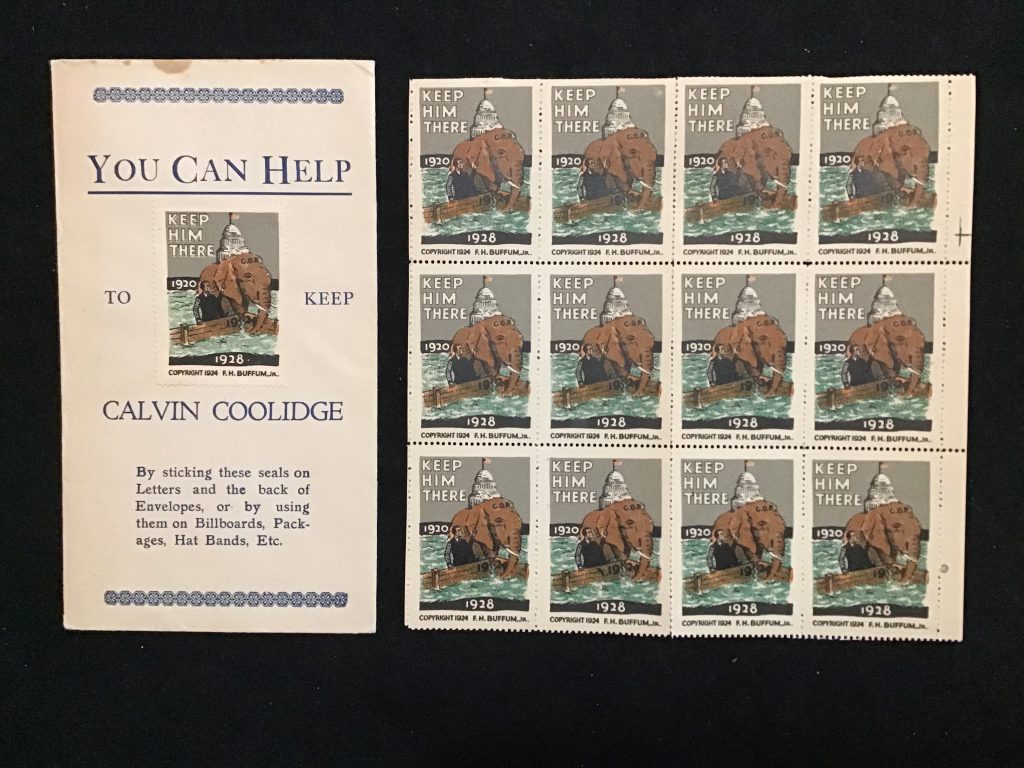
(From the Collection of John Owen Clark, Tallahassee, Florida. Member, American Political Items Conservators.)


